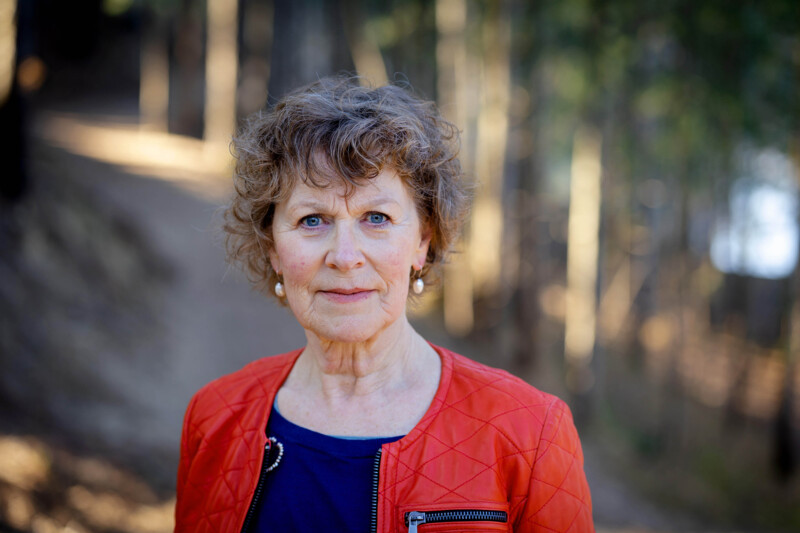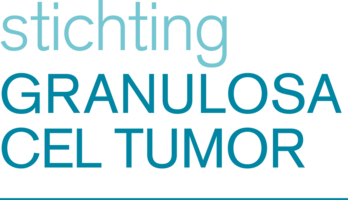Tetske van Ossewaarde
bad news
Two weeks later, at the regional hospital, first of all an ultrasound was taken. The ultrasound technician quickly called someone else. Together they looked intently at the monitor and made recording after recording. At the time I was still thinking of a polyp, but as I took my seat in the waiting room, a desk clerk came to tell me that it was going to take a little longer before I could see the doctor. They had assigned me to a different doctor. I asked their name and googled him while I waited. When I found him, I saw it said gynaecologist-oncologist behind his name. That's when the alarm bells went off for me. In the consulting room, he said straight away, "I have bad news; you have 1 or possibly 2 cysts or tumours on your ovary. I want to do more tests and with those results I am going to bring your case to a multidisciplinary consultation with the AVL". Ten days later I was back in his consulting room and he said "I can operate on you here next week if you want me to, but I think it is better that we are cautious and that you go to my colleagues in the AVL for further investigation". No sooner said than done. The doctor at the AVL asked me about possible symptoms of an ovarian tumour, and I told him that I had had very sensitive and swollen breasts for months earlier that year, and actually on and off in the year before as well. I explained that due to my husband's illness, I had not gotten round to seeing the GP about this. This is when the name granulosa cell tumour first came up. Blood was drawn to check inhibin A and B levels and oestrogen; markers for this tumour. In December, my doctor called me with the news that it was almost certainly this rare ovarian tumour. My inhibin B was at more than 3500, while at my age and after menopause, it was supposed to be below 10. In January 2018 I had surgery and during the operation they were able to diagnose what my doctor had suspected. It was a 12-centimetre granulosa cell tumour that had grown attached to the bowel. My staging was 1c-2.
recurrence
In January 2019, one year after my surgery, my inhibin A levels rose, which is an initial sign, and in August that year my AMH began to rise. This marker (anti-mullerian hormone) ought to be barely measurable after the menopause or after a complete debulking surgery. The only reason for it to be measurable is if there was a recurrence of the granulosa cell tumour. The AMH kept rising time and again, but it wasn't until October 2020 that my inhibin b also started rising. I had a clinical recurrence. In 2021 nothing was visible yet on the CT scan; in January 2022 a small spot was visible under in the abdomen and in January 2023 that small spot measured 2,5cm.
My doctor suggested that I should ask the multidisciplinary panel for this small tumour to be treated with radiofrequency ablation (RFA). At the next appointment I was told that there were not 1 but 4 spots. That was a big shock. Where had these suddenly come from and why hadn't the radiologist seen them right away? The multidisciplinary panel had decided that hormone therapy was the appropriate treatment for me. Surgery was not yet an option. I indicated I did not want to take this medication because of the high risk of osteoporosis. After all, I have two knee replacements as well as screws and rods in my vertebrae, and I especially don't want any of these to get loose, because then I'll just end up with a lot of extra problems. Besides, for me, quality of life takes precedence over quantity. So many stories from fellow sufferers are about how intense the side effects of the drugs are and how negatively it affects their lives. So I suggested radiotherapy as an option, but this was not an option in the AVL because the multidisciplinary panel had decided on systemic therapy, i.e. drugs.
radiation
Inspired by Helen Hohan's story on the GCT Survivor Sister Site and those of other international fellow sufferers, I asked my doctor for a referral to the Erasmus hospital in Rotterdam. After all, they have a CyberKnife there. He arranged to get me there, but he had grave doubts about whether I should do this. Even at the Erasmus my request was turned down a month after my appointment. The radiotherapist-oncologist thought it was far too risky and was afraid of irreparable damage to my intestines. He had also consulted with his gynaecology colleagues and they had suggested, after looking at the CT scan, that I was a prime candidate for surgery, and why wasn't that done? I mean! I continued on my lonely path in search of the treatment option: radiotherapy. At the Amsterdam UMC location VU, I got in touch with a radiotherapist-oncologist through a friend, who responded to my email with my story within eight hours. Four days later I sat in his consulting room for an initial consultation and he immediately said "if there are no red flags, I’m willing to irradiate you". I was astonished. Three months later, summer 2023, the time had come and 3 out of the 4 tumours were irradiated. After 5 weeks of radiotherapy at a very low dose, the tumours had already become much smaller. By the end of 2023, the CT showed that two tumours had disappeared and the third one had become much smaller, possibly residual necrotic tissue. Even the fourth and unirradiated tumour had decreased in size. The latest CT from May 2024 shows the same results and no new tumours. I continue to have my inhibin levels checked quarterly and live a good life, without pills!

